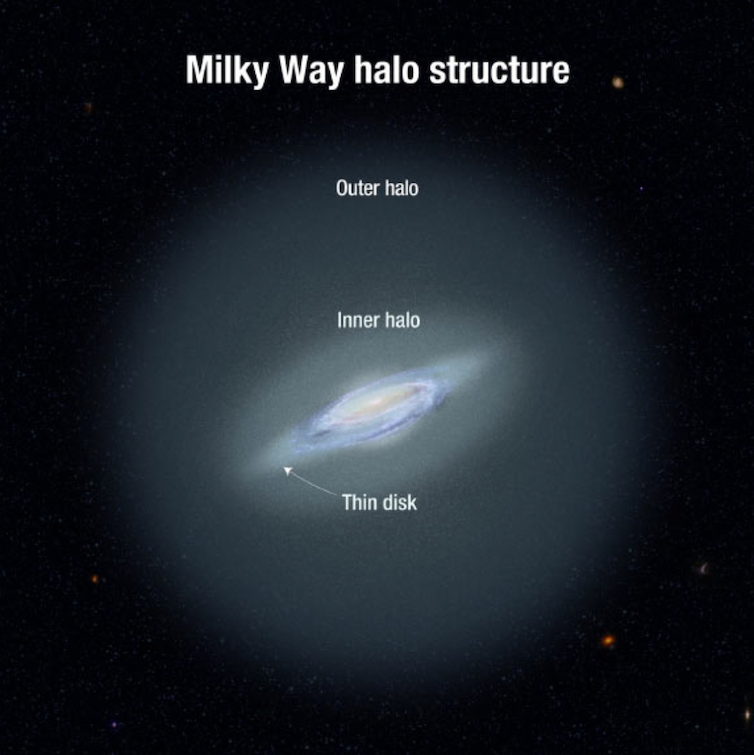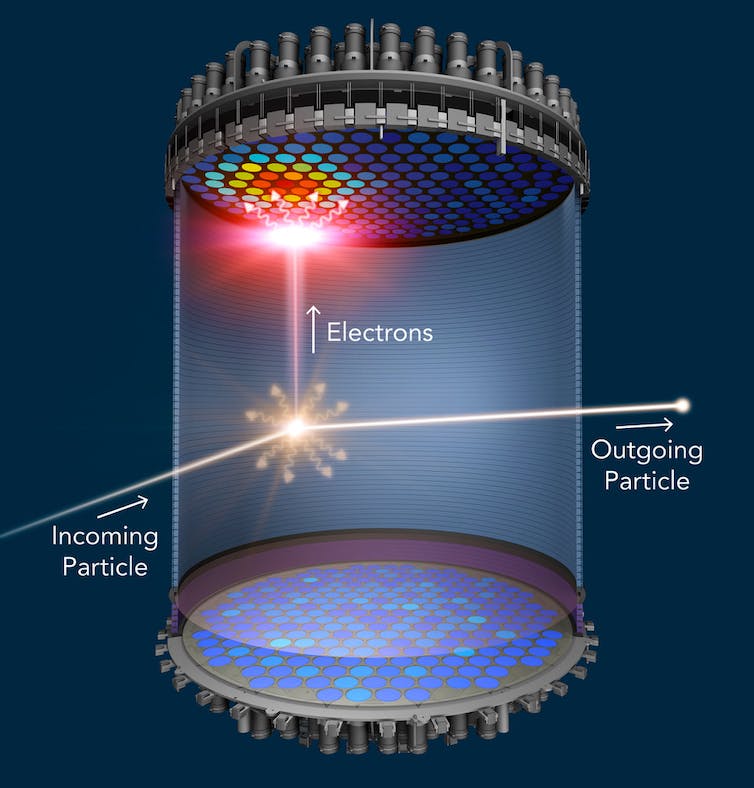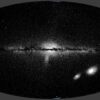Physicists like me don’t fully understand what makes up about 83% of the matter of the universe — something we call “dark matter.” But with a tank full of xenon buried nearly a mile under South Dakota, we might one day be able to measure what dark matter really is.
In the typical model, dark matter accounts for most of the gravitational attraction in the universe, providing the glue that allows structures like galaxies, including our own Milky Way, to form. As the solar system orbits around the center of the Milky Way, Earth moves through a dark matter halo, which makes up most of the matter in our galaxy.

An artist’s rendition of the halo of dark matter surrounding the central spiral disk of the Milky Way.
NASA/ESA/A Feild STSci, CC BY
I’m a physicist interested in understanding the nature of dark matter. One popular guess is that dark matter is a new type of particle, the Weakly Interacting Massive Particle, or WIMP. “WIMP” captures the particle’s essence quite nicely – it has mass, meaning it interacts gravitationally, but it otherwise interacts very weakly – or rarely – with normal matter. WIMPs in the Milky Way theoretically fly through us on Earth all the time, but because they interact weakly, they just don’t hit anything.
Searching for WIMPs
Over the past 30 years, scientists have developed an experimental program to try to detect the rare interactions between WIMPs and regular atoms. On Earth, however, we are constantly surrounded by low, nondangerous levels of radioactivity coming from trace elements – mainly uranium and thorium – in the environment, as well as cosmic rays from space. The goal in hunting for dark matter is to build as sensitive a detector as possible, so it can see the dark matter, and to put it in as quiet a place as possible, so the dark matter signal can be seen over the background radioactivity.
With results published in July 2023, the LUX-ZEPLIN, or LZ, collaboration has done just that, building the largest dark matter detector to date and operating it 4,850 feet (1,478 meters) underground in the Sanford Underground Research Facility in Lead, South Dakota.
At the center of LZ rests 10 metric tons (10,000 kilograms) of liquid xenon. When particles pass through the detector, they may collide with xenon atoms, leading to a flash of light and the release of electrons.

Particles interact with xenon in the LZ, releasing light that is detected by two light-sensing arrays at top and bottom.
SLAC/LZ, CC BY
In LZ, two massive electrical grids apply an electric field across the volume of liquid, which pushes these released electrons to the liquid’s surface. When they breach the surface, they are pulled into the space above the liquid, which is filled with xenon gas, and accelerated by another electric field to create a second flash of light. Two large arrays of light sensors collect these two…



